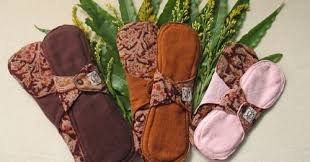Access to affordable menstrual products is a significant challenge for women in rural areas due to various factors:

Current Challenges
- Economic Constraints: Many women and families in rural areas struggle with financial limitations, making it difficult to afford menstrual products.
- Limited Availability: Menstrual products may not be readily available in remote or underserved areas, leading to reliance on unsafe alternatives.
- Cultural Barriers: Cultural taboos and lack of awareness about menstrual hygiene can further limit access and use of menstrual products.
- High Costs: The cost of menstrual products, particularly in rural areas, can be prohibitive for many women, leading to inadequate menstrual management.
Solutions for Affordable Menstrual Products
- Local Manufacturing Units: Establishing local production units for low-cost menstrual products can reduce costs, create jobs, and ensure products are readily available in rural areas.
- Subsidized Products: Government and non-governmental organizations can provide subsidies or distribute free or low-cost menstrual products to those in need, making them more affordable.
- Distribution Networks: Creating efficient distribution channels through local women’s groups, health workers, and community organizations can improve access to menstrual products in remote areas.
- Reusable Menstrual Products: Promoting reusable products like menstrual cups and cloth pads can offer a cost-effective and sustainable alternative to disposable products.
- Awareness Campaigns: Educating women and communities about the availability and benefits of affordable menstrual products can increase usage and improve menstrual hygiene.
Conclusion
Ensuring access to affordable menstrual products is essential for improving menstrual hygiene and health outcomes for women in rural areas. By establishing local manufacturing units, providing subsidies, and promoting reusable products, it is possible to address the barriers to menstrual product access and support better menstrual health.
FAQs
What are the main challenges in accessing affordable menstrual products in rural areas?
The main challenges include economic constraints, limited availability, cultural barriers, and high costs of menstrual products.
How can local manufacturing units help improve access to menstrual products?
Local manufacturing units can reduce costs, create jobs, and ensure that menstrual products are readily available in rural areas, addressing both supply and affordability issues.
What role do subsidies play in making menstrual products affordable?
Subsidies can lower the cost of menstrual products, making them more accessible to women in need and helping to address financial barriers.
How can reusable menstrual products benefit rural women?
Reusable menstrual products, such as menstrual cups and cloth pads, provide a cost-effective and sustainable alternative to disposable products, reducing long-term costs and environmental impact.
Why are awareness campaigns important for menstrual hygiene?
Awareness campaigns educate women and communities about the benefits and availability of affordable menstrual products, leading to better hygiene practices and increased access.
